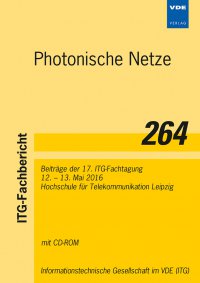Variable data rate for Optical Low-Earth-Orbit (LEO) Downlinks
Konferenz: Photonische Netze - 17. ITG-Fachtagung
12.05.2016 - 13.05.2016 in Leipzig, Deutschland
Tagungsband: Photonische Netze
Seiten: 5Sprache: EnglischTyp: PDF
Persönliche VDE-Mitglieder erhalten auf diesen Artikel 10% Rabatt
Autoren:
Shrestha, Amita; Giggenbach, Dirk (Deutsches Zentrum für Luft- und Raumfahrt e.V., Münchener Str. 20, 82234 Weßling, Germany)
Inhalt:
With the advancement of earth-observation sensor resolution, demand for high data rate satellite downlinks is increasing. Laser communication is an attractive technology offering very high data rate, yet allowing small transmit terminals and secure communication while avoiding spectral regulation constraints. However, the communication quality strongly depends on the fast varying link distance that causes changes in mean power, and on the turbulent atmospheric transmission medium that causes fades of typically 2-20ms whose strength depends on the link elevation. Therefore, in order to cope with such atmospheric effects, systems are conventionally designed with high link margin to maintain acceptable performance for worst case conditions, thereby wasting the resources during good conditions. Variable data rate is a promising solution to such problems. We investigate different techniques to lower the data rate when the channel condition gets challenging, and to suggest a suitable combination strategy to optimize throughput for the optical LEO downlink scenario. The techniques include varying pulse-width of non-return to zero on-off keying (NRZ-OOK), modulation order of Pulse Position Modulation (PPM), and duty-cycle of Return-to-zero (RZ). This paper highlights simulation results for different types of receiver front-end (RFE) models for a static channel, and future ideas to mitigate fades.


